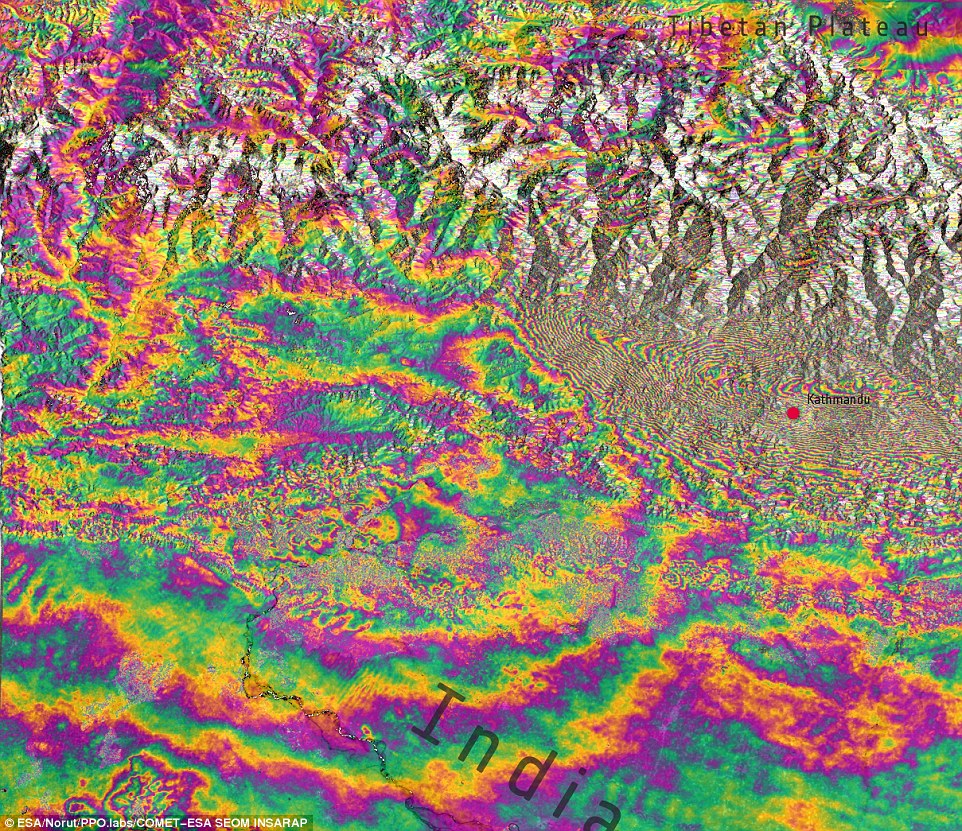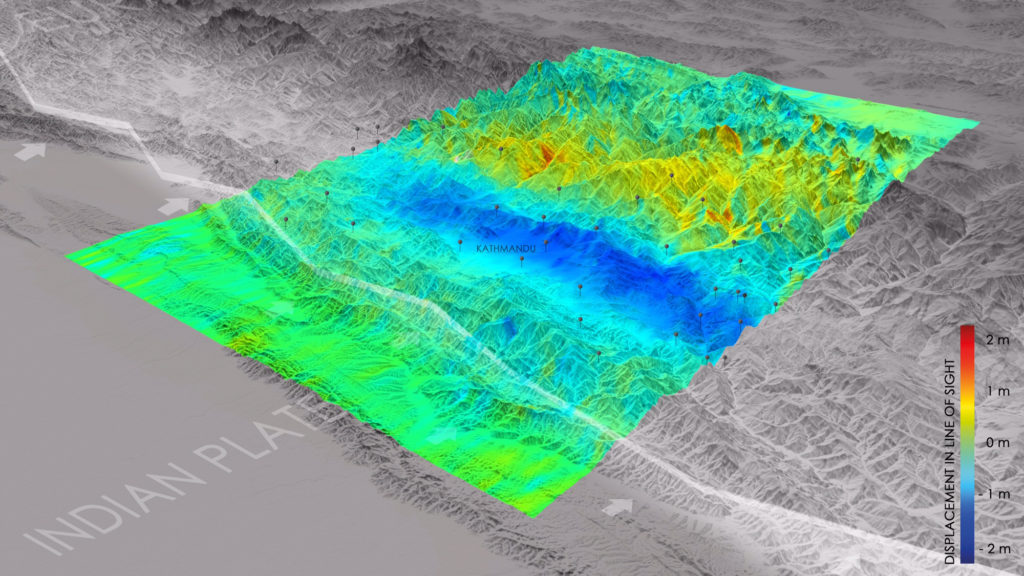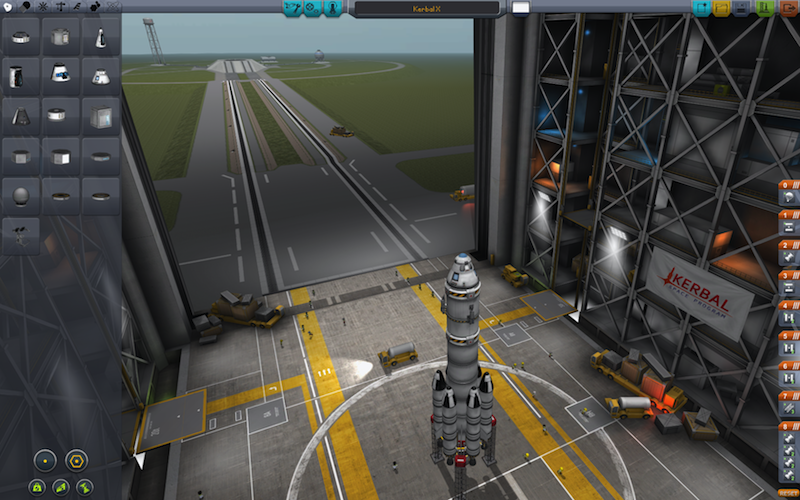Radar images can be used to examine deformations of the land surface. Therefore an area of interest has to be recorded before and after a disruption event presuming the exactly equal orbit and inclination of the sensor. The wave patterns of the two images are combined and turned into a 3d surface. After removing topography, very small deformations (mm) can be detected even within space borne derived imagery. The technique is called radar interferometry (InSAR). It tells how much a land surface moved in relation to the satellite in orbit.
Nepal and particularly the area around its capital Kathmandu were hit by a strong earthquake on April 25 2015. The 7.8 magnitude earthquake claimed over 5000 dead people and affected millions of people living in that area.
For the earthquake in Nepal, Sentinel-1A’s swath width of 250 km over land surfaces has allowed for an unprecedented area size to be analysed from a single scan. Two images taken before and after the earthquake were combined. The resulting interference patterns reveal the extent of deformation, whereas one colour fringe refers to a deformation of around half of the used radar wave length (ca 2,8cm). Thus, colour tapes lying close together imply a high deformation whereas dispersed colour bands refer to less affected surface disruptions. Radar imagery from the Sentinel-1A satellite shows that the maximum land deformation is only 17 km from Nepal’s capital, Kathmandu, which explains the extremely high damage experienced in this area.

Interferogram over Kathmandu, Nepal, derived from two Sentinel-1A scans on 17 and 29 April 2015 – before and after the 25 April earthquake. Each ‘fringe’ of colour represents about 2.8 cm of deformation. The large amount of fringes indicates a large deformation pattern with ground motions of 1 m or more. Source: ESA


The interference pattern itself does not reveal weather the surface lifted or dropped. Scientists from the German Aerospace Agency (DLR) have used data from Sentinel 1-A to create a map that reveals how much and in which direction the land in and around Kathmandu moved in relation to the satellite in orbit. The map is counterintuitive in the sense that blue colors (negative value) indicate areas that raised, while the yellowish to reddish tone reveals areas that sagged (positive values) due to the earthquake. The map shows that the terrain in Kathmandu raised by around 0.8m, the mountainous area right in the North of Nepal’s capital thrusted skywards of up to 2m! At the same time the mountainous region farther North of Kathmandu dropped by less than a meter.

Changes in elevation and position that occurred as a result of the April 25, 2015 earthquake in Nepal are depicted in this image based on satellite data. Areas in blue were raised by about 0,8 meters, the ones in dark blue were lifted up to 2,5 meters. (Source: DLR)
Imagery from the Sentinels and other Copernicus contributing missions are coordinated by ESA to be used by the Copernicus Emergency Management Service (EMS), which supports all phases of the emergency management cycle. Sentinel-1A is the first satellite for the Copernicus environment-monitoring programme led by the European Commission. Its all-weather, day-or-night radar imagery is particularly suited to support impact assessment for many types of geohazards. The satellite is planned to provide systematic observations of tectonic and volcanic areas at global level.
Source: ESA, Discover









